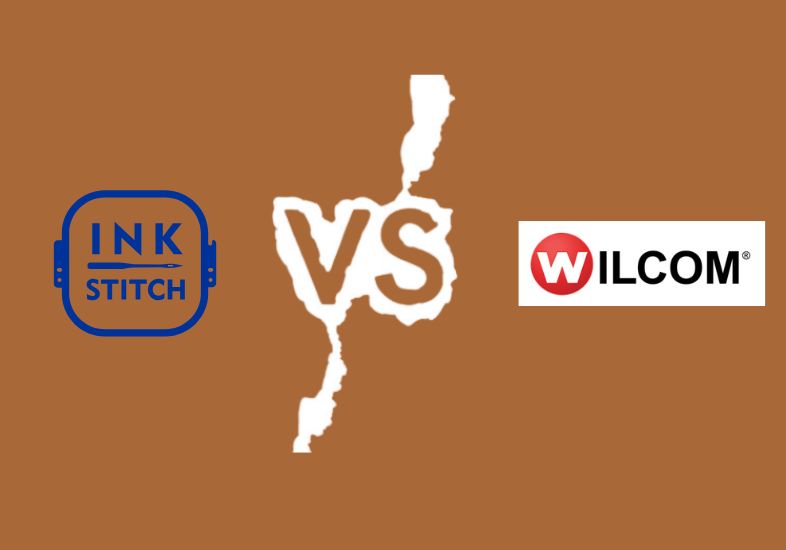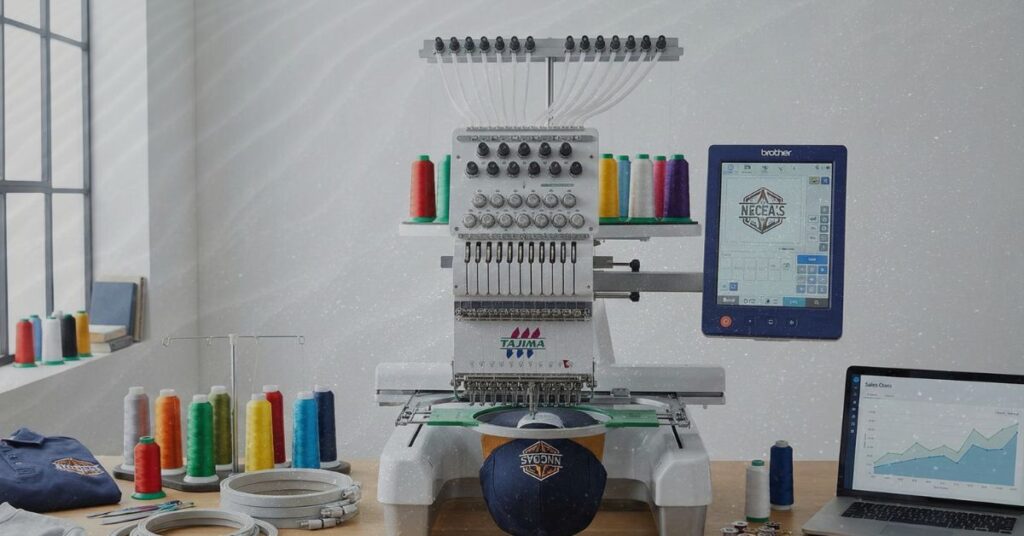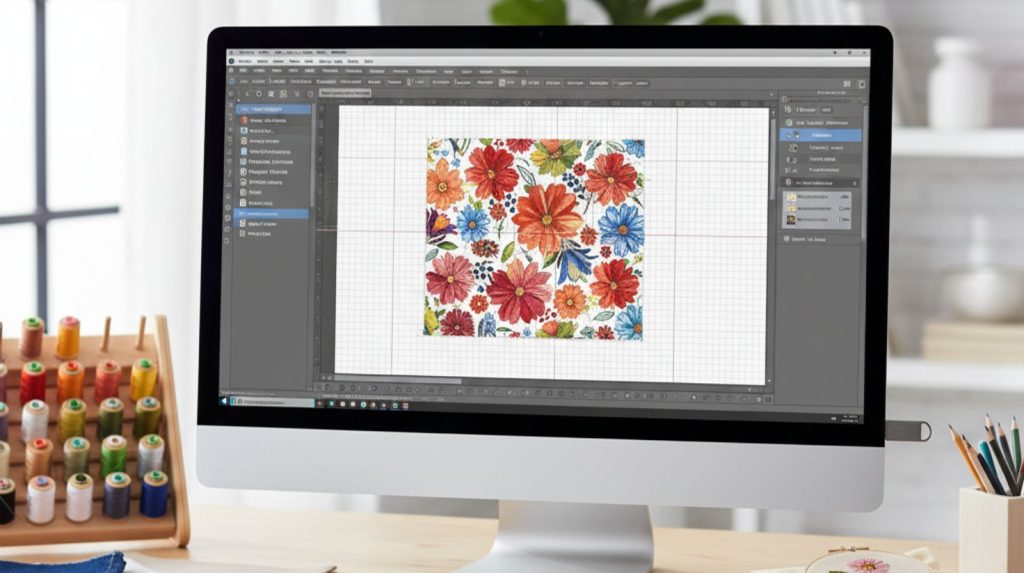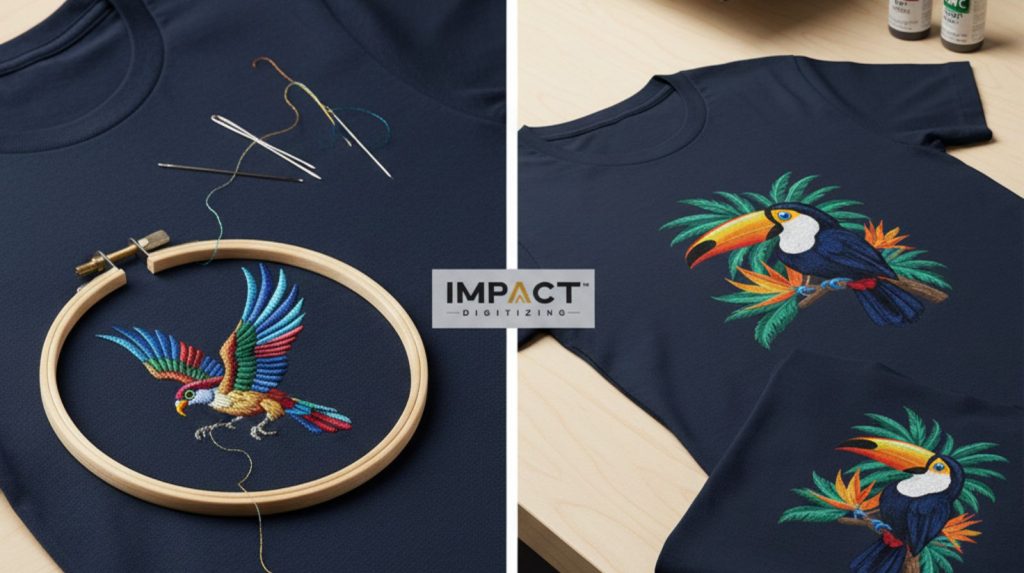Embroidery is an art that holds traditional value. In the modern world, digitalization has swept everything by storm. We no longer need hand embroiderers, which were very time-consuming and prone to human error.
With the help of modern digitized software for embroidery, it has now become very easy to create patterns in bulk, which is less time-consuming and has fewer human errors.
With many software in the market, picking the right ones might just be tricky. In this blog, we will discuss two of the major embroidery software Wilcom EmbroideryStudio and InStitch.
Both software will help you create custom embroidery designs, but they work in very different ways. Let’s break them down in plain terms so you can see which one fits your workflow better.
Wilcom and InkStitch: A Quick Overview
Before we dive into its more complex features, here is a basic concept of what makes these two programs different from each other
Wilcom embroidery software is known for precision and control. It is high-end, professional-grade software. It is mostly used for commercial businesses producing bulk quantities. Professionals have been using them for years, and it is considered the industry standard.
InStitch embroidery software, on the other hand, is a new, open-source tool. It runs on your browser with no installs and no bulky setup. It focuses on speed, flexibility, and easy access. Therefore, it is beginner-friendly and best for hobbies and small-scale designers.
In short, Wilcom is pro-level software, while InStitch is best for beginners.
What suits you Best?
Here is a list of the key characters that will serve as a guideline to compare and analyze which software suits you best before taking the final step.
- Your skill level(beginner or expert)
- control(manual or auto digitalizing)
- Simplicity( project complexity)
- Price (open source or paid)
InkStitch Embroidery Software: Simple and Smart
Best for:
InkStitch is best for people pursuing their hobbies, small-scale crafters, and designers who are on a budget and primarily work with vector files. It is designed for convenience; you can access your work anywhere and anytime.
Pricing:
This is a free and open-source software. There are no licensing fees.
Ease of use:
It is best for beginners and moderately easy to use, especially for those who are familiar with vector graphics software like Inkscape.
Digitalizing feature:
customizable and is built on vector graphics. Includes tools like auto-underlay generation and stitch-by-stitch previews. Less granular control than Wilcom.
Design workflow:
Operates as an extension of Inkscape, meaning the workflow is tied to that program. Best for users who prefer working with vector-based designs.
Vector compatibility:
Works directly with Scalable Vector Graphics (.SVG) files within Inkscape, providing a seamless vector-to-stitch workflow.
File format:
Supports many common embroidery formats, but may not be as extensive as Wilcom.
Platform:
Runs on Windows, macOS, and Linux as an Inkscape extension.
Wilcom embroidery software: the pro tool
Best for:
This is best for professional digitizers, commercial embroidery businesses, and serious users who need complete manual control over their designs.
Pricing:
Extremely expensive. Packages can cost thousands of dollars, reflecting their commercial power. Hatch is a more affordable alternative to Wilcom.
Ease of use:
It has a steep learning curve due to its vast set of tools and features. It is best for professional use and not intuitive for beginners.
Digitalizing feature:
Complete and precise control over every stitch. Offers advanced tools for automatic underlays, managing thread colors, and detailed stitch editing.
Design workflow:
Built for production. Excellent for handling high-volume, commercial-grade digitizing with integrated features for business workflows.
Vector compatibility:
It can import vector files (.eps), but its core strength is not in a native vector environment.
File format:
Wilcom supports a wide range of embroidery machine formats, allowing for seamless production across different devices.
Platform:
This typically runs on Windows, with a web-based “Workspace” option for limited functions.
Limitations: Wilcom vs InkStitch
No software is perfect. However, measuring and analyzing its pros and cons will provide adequate information to select one over the other, suited to your needs.
Inkstitch limitations:
- It does not support large-scale and complex production.
- You may feel restricted in handling intricate corporate logos or detailed stitch effects.
- Since it is a cloud-based software, it will need a stable internet connection.
- It can lag when editing and previewing, as it doesn’t support heavy and complex designs.
The final verdict? This will work best for small business owners, newbies, and day-to-day embroidery projects.
Wilcom limitations:
- This is expert-level software; therefore, it will take time to learn it.
- The interface feels overwhelming when you are new to it due to its complex features.
- The Wilcom embroidery studio price is higher than most software in the market.
- It is desktop-based, which requires a good computer for smooth running.
The final verdict? This will work best for experts working for larger businesses producing bulk quantities.
Which is the better choice, Wilcom or InkStitch?
Choose Wilcom if:
- You are a professional digitizer.
- Running or working for an embroidery business.
- You need maximum control over your designs.
- Need commercial-grade quality and precision.
- Know how to use advanced features for underlays, stitch types, density, and special effects.
- Budget is not your primary concern.
- You need comprehensive and integrated business tools.
Choose InkStitch if:
- You are a beginner or pursuing it as a hobbyist.
- You prefer working with vector designs.
- You don’t need advanced tools.
- You want a no-risk entry point.
- Budget is your concern.
Conclusion
The short answer: choose a software depending on what you do. Think of it this way: Wilcom embroidery digitizing software is the high-end studio machine, and InkStitch embroidery software is the smart, flexible tool you can carry anywhere.
The Real Deal
At Impact Digitizing, we use both. Our team often relies on Wilcom embroidery digitizing software for high-detail projects that need total precision. But for quick turnarounds and smaller edits, InStitch helps keep things fast and flexible.
Faqs
Do I need Inkscape to use InkStitch?
Yes, Ink/Stitch is an Inkscape extension. Download and install Inkscape Version 1.0.2 before you install Ink/Stitch.
What is Ink/Stitch software?
InkStitch is an open-source embroidery design software. It is best for people pursuing their hobbies and small-scale designers who are on a budget and primarily work with vector files. It also works on cloud.
What is Wilcom used for?
This is best for professional digitizers, commercial embroidery businesses, and serious users who need complete manual control over their designs.
Can Wilcom convert images to embroidery files?
Use Mode > Convert Graphics to Embroidery to convert selected graphics to embroidery and switch to Wilcom Workspace. Use Mode > Keep Graphic Objects to retain the original graphics during conversion. EmbroideryStudio lets you convert vector graphics directly to embroidery objects using a variety of techniques.






